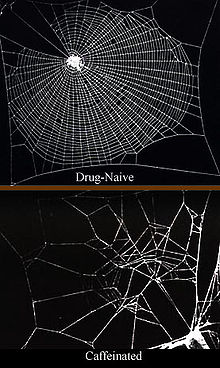By Casey Seidenberg
To my delight, there has been a lot of talk about sugar these days, including its toxic effects and addictive qualities. But if we are going to discuss toxic effects and addictive qualities, we should also address caffeine.
Caffeine is a drug. As with most drugs, individuals who consume caffeine build up a tolerance for it, feeling the negative effects less and less even as they consume more and more. A body addicted to caffeine will most likely go through a withdrawal period.
(Stephen Krow)
You might think children aren’t consuming a lot of caffeine, or at least not as much as their Starbucks-toting parents. In a 2010 study published in the Journal of Pediatrics, 75 percent of children surveyed consumed caffeine on a daily basis, and the more caffeine the children consumed, the less they slept. The American Association of Poison Control Centers has reported roughly 1,200 cases a year of caffeine toxicity in children younger than age 6!
As more and more of my sons’ friends regularly get Frappuccino's with their dads on Saturdays, bring energy drinks to their sports games or order soda every time they go out to dinner, my boys are curious. They want to know why we don’t have those items in our fridge and why I don’t think it is a smart idea for them to boost their energy with caffeine.
This is what I told them:
- Caffeine does its job by blocking a chemical that is responsible for calming the brain.
- When this chemical is blocked, stress hormones increase.
- When we have a high-stress response, our insulin resistance and fat storage can increase. (Diabetes and obesity, anyone?)
- Caffeine also inhibits impulse control by making the body think there isn’t a need to produce as much serotonin. (One son asked me if this meant that his brother would tackle him more often after consuming caffeine!)
- Caffeine causes the body to eliminate water, and kids who drink a lot of caffeinated beverages often drink less water. Less water is not a good thing for our little athletes who are sweating on the sports fields! All of this leads to dehydration.
- Caffeine is not a nutrient, like protein or calcium. We do not need it to stay alive or healthy.
- Caffeine takes three to seven hours to get out of the body, so the afternoon jolt of caffeine can disrupt nighttime sleep.
- Caffeine withdrawal can leave children, and adults for that matter, irritable and with low energy. When left without energy, a body will crave more of the substance that provided the pre-crash jolt. Let the caffeine addiction begin!
Then I showed my boys a 1995 NASA study on spiders and drugs that includes a jaw-dropping image of two spider webs, one produced by a spider given caffeine and one by a drug-free spider. The difference is shocking. The caffeinated spider’s web isn’t nearly as neat or operational; in fact it barely resembles a web!
My kids were fascinated by the images. I was horrified. Even if the effects of caffeine aren’t the same in children as in spiders, the study got me thinking about how children who have consumed caffeine often have less impulse control, fine-motor precision and information retention. Those effects do not bode well for the school day, or even the afternoon homework routine. Our kids are sensitive to chemicals and stimulants. Their little bodies are not used to such substances, and we should keep it that way.
So next time your child needs a burst of energy, try fresh fruit or a smoothie. A small bowl of raw nuts can provide real energy in the form of protein and healthful fats. But forgo that caffeinated Coke, the flavored iced tea that might have even more caffeine than a soda, or the Amp energy drink, which makes the other two look like amateurs. Instead of encouraging caffeine consumption in our children, let’s teach them to drink water, eat well, and sleep for their energy. We might just sleep better ourselves.
Jolting numbers
The U.S. government doesn’t have recommendations for children’s caffeine intake, though the American Academy of Pediatrics suggests a limit of 100mg a day for adolescents. Here are amounts of caffeine in milligrams of common beverages.
- 16 ounces of Monster energy drink: 160
- 9.5 ounces of Starbucks Frappuccino: 115
- 8.4 ounces of Amp energy drink: 74
- 12 ounces of Mountain Dew: 54
- 16 ounces of Snapple (peach): 42
- 12 ounces of Coca-Cola: 35
- 8 ounces of hot cocoa: 9
Seidenberg is the co-founder of Nourish Schools, a D.C.-based nutrition education company.
Reprinted from an article on www.washingtonpost.com by Casey Seidenberg

No comments:
Post a Comment